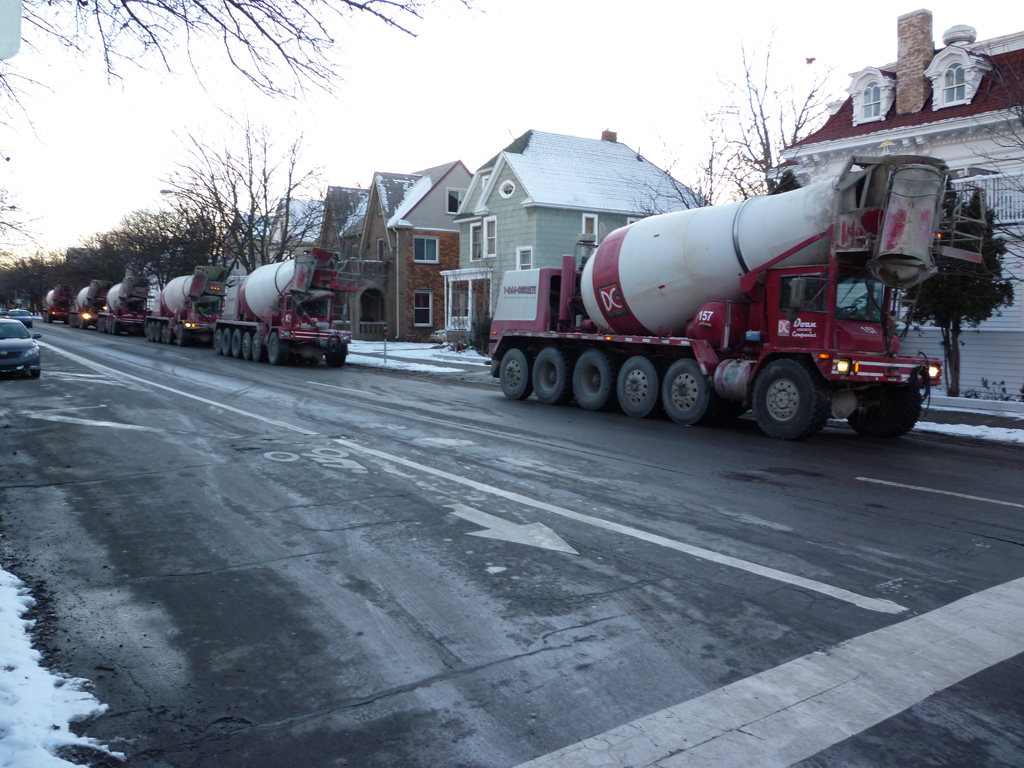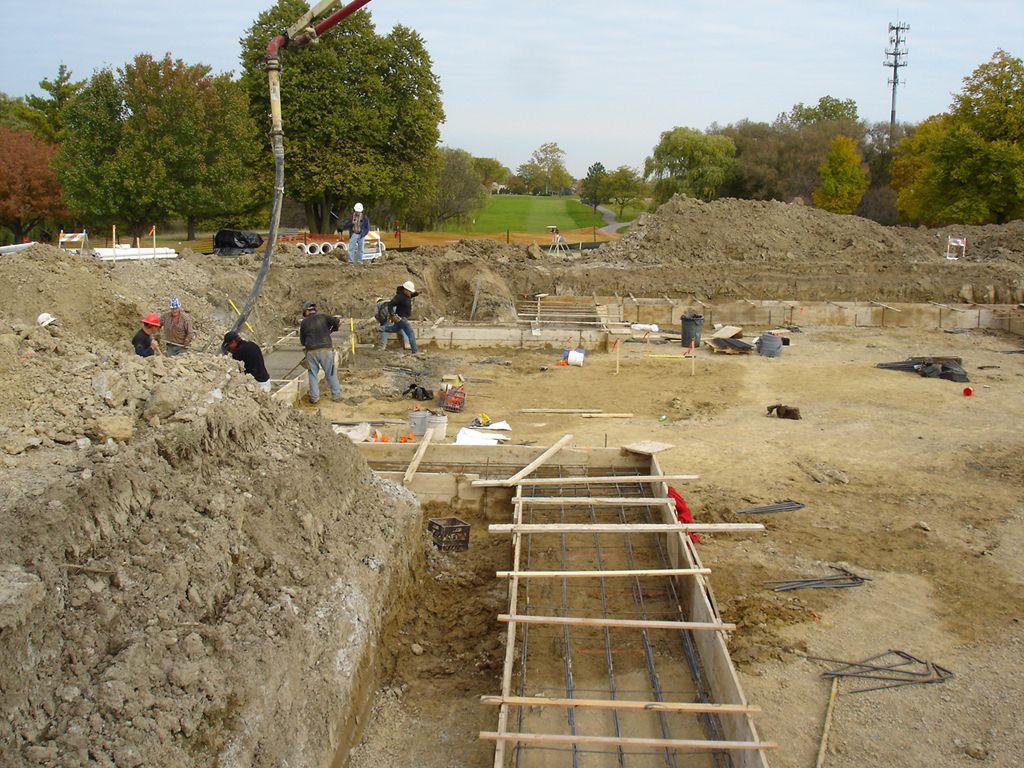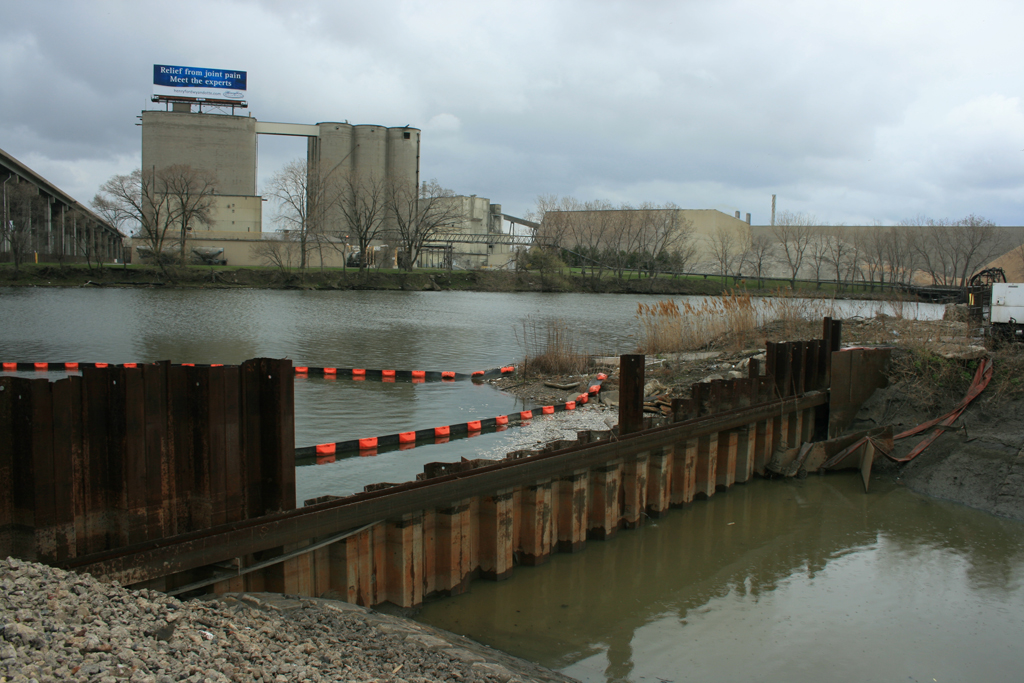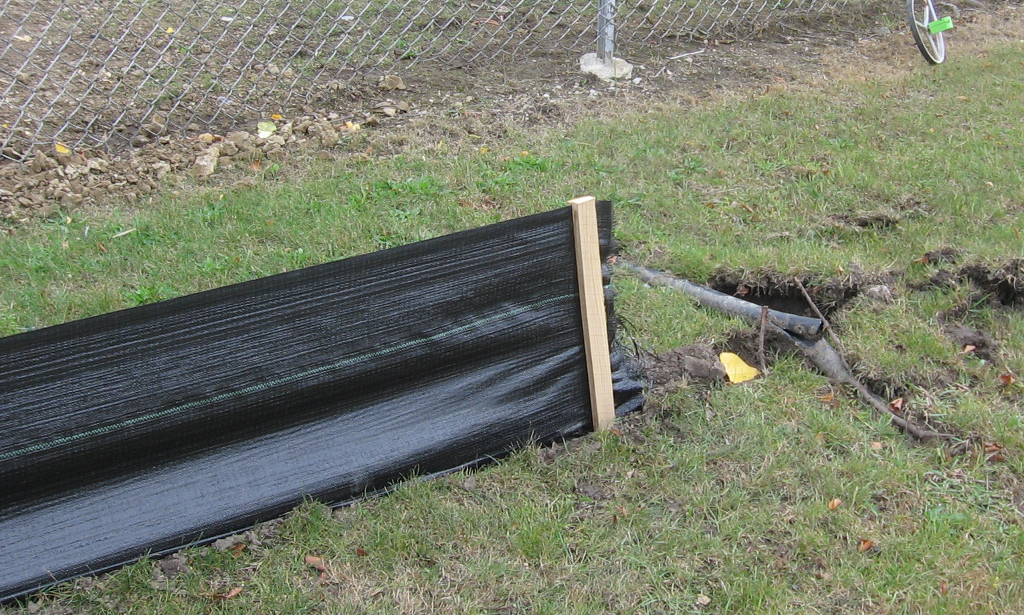
Photo Credit: Alex Mead
The blue folded arm on top of the tower is a placement boom off a concrete pump truck. This setup is used to allow better access to the bottom of the excavation for crews pouring concrete in the foundation. By moving the base of the placement boom to a tower, much more range is added to the boom. If you look closely the truck the boom belongs to is next to the excavation on the right side of the photograph. As usual with a concrete pump truck, concrete mixers deposit their concrete into the pump truck which pumps the concrete through a pipe into the boom. The boom then places the concrete anywhere in the bottom of the excavation it can reach.







